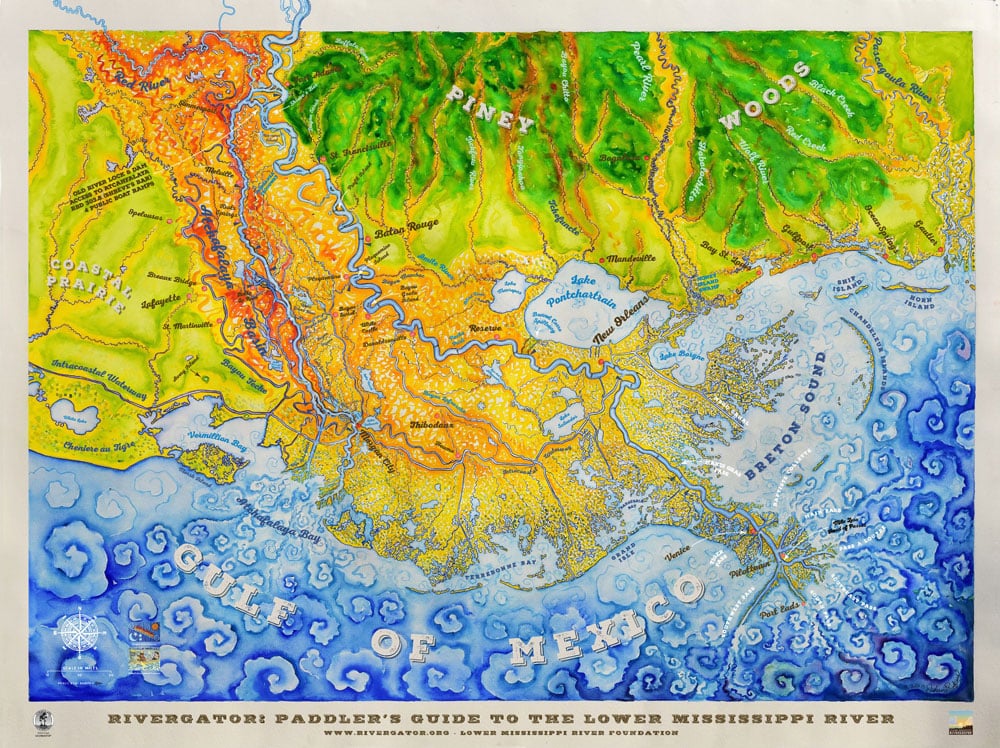Building a Narrative
I’m building a house on narrative. No, seriously. We are building a beach house in Waveland, Mississippi, and when the time comes for a decision, I ask myself, what’s the story of these people who built this house?
It’s not my story. It’s the story of the people who lived in Mississippi in the 1940s and built a house for their family on the coast. They are practical people who have deep wells of affection for one another. The patriarch gifts them with the practicality, without which his wife would sail off into the clouds. He likes life plain and simple, but carries a soft spot in his heart for fine woods. The matriarch of the clan wearies easily and constantly searches for serenity, forever gravitating to less—bare floors, enamelware dishes, white sheers that flutter in the breeze and never need cleaning. But every once in a while, she can’t help but splurge on something her heart desires.
These people, and their children, take for granted black and white tile on the bathroom floors, crystal door knobs, white iron beds. They congregate on the deep porch and wake to morning coffee perked on the work table in the kitchen. They know the man who made the table and cherish his work. Sometimes, their unquestioned aesthetic casts towards a drugstore vibe—something about the marble counters and goose neck faucet and medicine cabinet above the bathroom sink; was the patriarch’s father a druggist, perhaps? But then the father’s leather chairs kick in and the mother’s bamboo shades soften the stone and—oh, my goodness, a fireplace!
How often will they use the fireplace on the Mississippi coast? It doesn’t matter. This is their version of a home in the Caribbean. Or a house on Grand Isle. Or a cottage on Martha’s Vineyard. Or wherever else human imagination creates a grace-filled lull. A pause, a moment in time that no matter how long they live, how far from this place they wander, this moment will forever stand still.
For our family in their house in Waveland, the moment plays out in Saturday mornings spent swinging in the hammock below the house, hearing the palms whisper. Upstairs the sheers flutter, bacon sizzles in the iron skillet. Later when the afternoon ripens, they will walk to the beach and dig their toes in the sand. Maybe ride bikes into Bay St. Louis, maybe paint a landscape of the spreading Bay. That’s what people did in the 1940s, right? They took up watercoloring.
So when I’m standing in the half-finished kitchen, struggling to tell the architect why I do NOT want the work table to match the cabinets and the island is NOT to look like an island, I cannot articulate my reasoning. It’s not “British Colonial” or “Caribbean” or “Tropical” or “Industrial” or “Rustic.” It’s this family, their dream. I’m just trying to get it right for them.

Susanne
I can visualize what you’re looking for from your narrative. I see it quite clearly in my minds-eye but maybe that’s the problem? My mind has all these other connections it’s building on to come up with the visual. Maybe your architect’s mind is doing the same thing but his visions are built on architectural “stereotypes”. Just a thought. Your vision does sound very homey.
Ellen Morris Prewitt
This is something I tell beginning writers all the time, Susanne. They will get frustrated when they first put words on paper because whatever they are envisioning in their minds is so rich . . . and it’s stick figures on the page. That’s because our brains fill in so much that we aren’t aware of but goes towards creating the atmosphere of our thoughts/memories. The key in writing, I think, is to select the details that invoke not only the concrete object/image, but the penumbra of atmosphere, too, something you do so well.
So there’s a long-winded reply. But this idea has always intrigued me, especially since so many newbie writers give up in disappointment because of it.
I do think my architect, who is quite wonderful, has found my choices outside his usual experience. So he’s having trouble putting them together with what he is accustomed to his clients wanting. That’s why I keep going back to the beginning: “this work table is supposed to look like a table, not a cabinet.” Interestingly, the man making the table got it immediately. 🙂
Luanne
Fun fun fun–I love design. But more importantly, the way you wrote this: just lovely, Ellen.
Ellen Morris Prewitt
I can just fall into design like a Pooh Bear in a vat of honey. Do you like interior design? My husband says I design the same way I dress myself. 🙂
Luanne
Yes, I do. I mainly do it fairly traditionally (but eclectically) because I have to work with the other one over here who also likes interior design. But when I have a little freedom, I do things a little different. It’s always been this way for me. First thing I did in my dorm room was to flip the bed upside down and make a very long bed skirt out of funky remnants at the dime store so it was a brightly colored cave underneath, for instance.
Ellen Morris Prewitt
I love that. I just bought a chest for the beach house that locks with a brass scorpion! This is my idea of fun. 🙂
The Kitchen - Ellen Morris Prewitt
[…] told y’all about the woman who owned my beach house. By which I mean, the narrative I developed to guide this […]
Our New Surroundings - Ellen Morris Prewitt
[…] finished the beach house. I told y’all about the narrative I’d created to guide the process along. I’m only gonna share one photo, or else […]